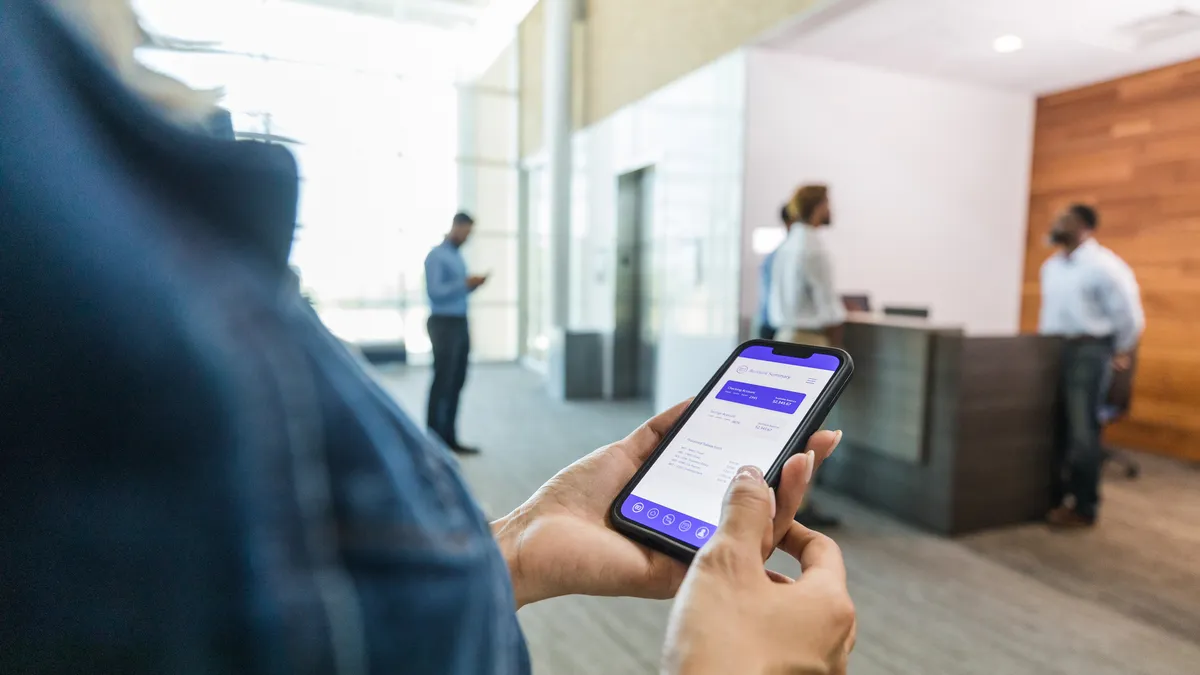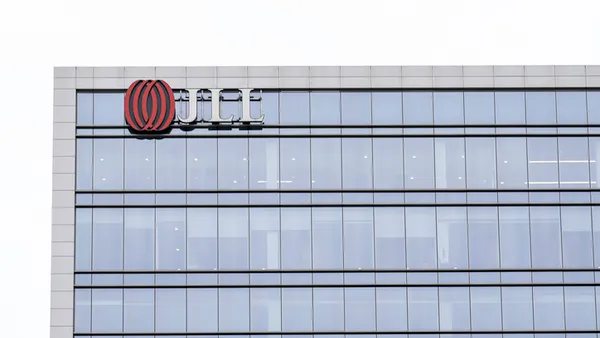Dive Brief:
- Office tenants are placing strong value on workplace applications, with 46% of tenants saying the technology deployed in their office buildings reflects their company brand and culture, according to the latest data released in VTS’ global workplace report.
- Some 80% of tenants said it is important to have a single app that can facilitate workplace engagement, including interactions with building staff, but responses differed on the value derived from these applications. While 25% of respondents expressed a desire for their workplace app to deliver building information and communications, 23% said they value building access and 19% want the ability to submit operational requests, according to VTS’ survey of 400 company leaders.
- Over 90% of tenants said they want a single app to access the building and the workplace suite, the report says. Additionally, unified applications enable building owners and operators to consolidate management and operations with tenant communications and leasing strategy data. “Investors that [will] gain the most advantage from the deployment of experience, services and technology are those that think about the intersection between management and leasing really seriously,” Emma Buckland, global president of property management at CBRE, told Facilities Dive.
Dive Insight:
Demand for office space has shown signs of rebounding with a 27% year-over-year increase through February, following six months of consecutive year-over-year growth in the second half of 2023, according to VTS’ 2024 leasing prediction outlook. While national office demand is still 35% below 2018 and 2019 averages, certain markets including New York City and Los Angeles have started the year at or above those demand levels, per the outlook.
VTS CEO Nick Romito, in an interview with Facilities Dive, emphasized the need for building owners and managers to enhance office experience, making it more appealing to return onsite than work remotely. “The vast majority of companies are returning to the office, or have returned already. The next chapter of the story … is how the people who run these buildings and the technology within them [can] really change the experience, so that it is noticeably better” than when employees were remote, Romito said.
VTS’ most recent data supplements a global workplace report it released in four parts since December, providing insight into return-to-office trends, common workplace frustrations, hybrid work needs and tenant demands.
In addition to workplace access, communications and operational request submissions, which respondents highlighted as the most valuable features of a workplace app in VTS’ latest survey, 16% said they needed a workplace app to reserve spaces and book services in the building, while 6% emphasized the importance of access to events and perks.
“Putting together all of these operational data points against the financial profile of the tenant suddenly gives us a really different perspective around the economic viability of that tenant, but also how happy they are, how much they're using the building, [and] how their people feel about using the building,” Buckland said.
Companies also cited a preference for workplace apps that could mirror their company’s brand identity, with 77% of tenant executives ranking this feature as important. In addition, 88% say they believe that personalizing these applications with building- and company-specific information and experiences will boost their employees’ office attendance.
“COVID happened and everybody went home for years,” Romito said. “Jobs became a transaction. Culture didn’t really matter if [employees were] working from home. Now, if people try to go back or have gone back, there’s an identity crisis.”
Romito also noted that employees are being asked to use technology for buildings that they do not have any real relationship with. Personalizing technology solutions, like workplace apps, to reflect the company’s brand and culture can make employees feel more connected to their office environment, according to Romito. Personalization can also drive engagement, even with the same technology that managers use within a building, and lead to more positive outcomes for both tenants and employees, Romito said.
Tenants want to partner with owners and operators in “every facet of their workplace strategy,” the report notes, emphasizing that delivering a workplace experience focused on tenant needs and the company’s brand will deepen relationships and boost sentiment.














